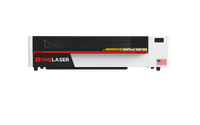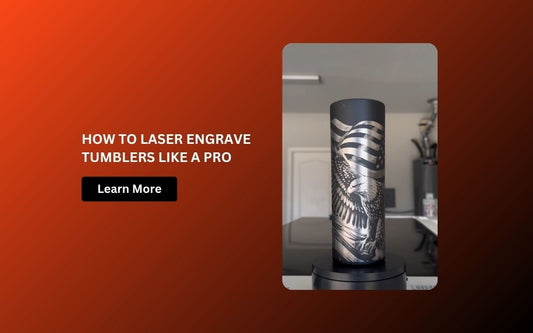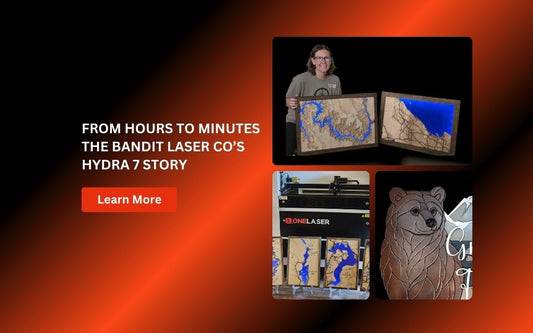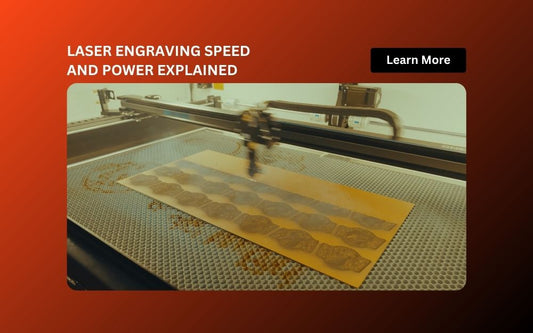Getting the greatest engraving and cutting performance from your laser machine depends on keeping its optics clean. Your normal maintenance schedule should include keeping the laser lens and nozzle clean if you possess an XT or XRF OneLaser. Using actual, step-by-step advice from Cam Edmonds of Edmonds Woodshop, we will demonstrate in this post how to clean laser lens on these machines.
This article will guide you through all you need to know whether you are just learning how to clean a CO2 laser lens or have been operating a workshop for years and want to fine-tune your cleaning procedure.

1. Why Clean Your Nozzle and Laser Lens?
For exact engraving and cutting, your laser lens concentrates the beam. With time, dust, glue, smoke, and material debris will accumulate on your lens and block or disperse the laser beam, causing:
- Poor engraving quality Inconsistent cut depths
- Overheating or even lens fracture
- Reduced laser efficiency
Especially when cutting materials like wood, acrylic, or leather, the laser nozzle - especially on autofocus machines like the XT/XRF - also becomes caked with soot, resin, and particle matter.
Clean optics means better performance and longer machine life.
2. Tools and Supplies You’ll Need
For safe and efficient laser maintenance, here is a few simple tools on hand:
- 99% Isopropyl Alcohol (or 91% if 99% is unavailable)
- Lint-free swabs or Q-tips
- Baby wipes or microfiber cloths
- Snap ring pliers or a thin steel ruler
- Replacement lens (if needed – 20mm diameter, 2" focal length for XT)
- Soft gloves (optional for fingerprint-free lens handling)

3. How to Remove and Clean Laser Lens (XT / XRF)
3.1 Remove the Lens Cover and Magnetic Block
Start by removing the front protective cover on your laser head. Then, take off the magnetic lens block to access the lens housing.

3.2 Locate the Lens Based on Your Model
- XT Machine: The lens is mounted at the bottom of the laser head.
- XRF Machine: The lens is mounted at the top of the laser head.
Knowing where your lens is located helps you avoid damaging any internal parts during removal.
3.3 Loosen the Lens Retainer
Use a thin steel ruler or snap ring pliers to carefully unscrew the lens retainer ring. In this guide, Cam prefers the ruler because it allows more control, reducing the risk of scratching the lens.
Apply slight pressure until the retainer loosens, then unscrew it by hand.

4. Cleaning the Lens Properly
Option A: Clean After Removal
Once removed, lay the lens on a lint-free surface. Moisten your swab or Q-tip with 99% isopropyl alcohol, then gently clean:
- Top surface
- Bottom surface
Use circular motions and avoid excessive pressure.
Pro Tip: If your lens has a convex (curved) side, that side should always face upward when installed. You can tell you're doing it right if you can see a reflection - like your camera lens - on the curved side.

Option B: Clean Without Removing
Don’t want to take the lens out? No problem.
- Simply pull out the lens holder
- Use a Q-tip and isopropyl alcohol to clean the top and bottom surfaces
- Reinsert, and you’re good to go

5. Reinstalling or Replacing the Lens
If you’re replacing the lens:
- Ensure your new lens matches the specs: 20mm diameter, 2-inch focal length
- Drop it into the lens holder with round side up
- Reinstall the retainer ring and gently tighten using your steel ruler or pliers
Tip: Don’t over-tighten. Just enough to secure the lens is sufficient.
6. Cleaning the Laser Nozzle
The laser nozzle of your laser can quickly collect debris from your work materials, especially during heavy cutting jobs.
6.1 Why It Matters:
- Built-up debris can block the laser path
- It may interfere with red dot alignment
- Clogged nozzles reduce cutting efficiency
6.2 How to Clean It:
- Unscrew the nozzle tip (righty-loosey)
- Inspect the opening – check for soot or debris
- Use a baby wipe or microfiber cloth to gently wipe the nozzle
- If needed, use a swab dipped in isopropyl alcohol for deeper cleaning
- Reattach the nozzle once it’s clean

Wiping the nozzle daily helps maintain peak laser performance by ensuring clean, consistent output and preventing buildup.
7. Best Practices for Laser Maintenance
To keep your OneLaser XT or XRF laser running like new:
- Clean Your Lens Regularly: Do this daily if you run high volumes, or every few jobs if usage is light.
- Inspect for Damage: If you notice cracks or discoloration on the lens, it’s time to replace it.
- Clean Your Nozzle Often: Dust and soot build up faster than you think. A clean nozzle = better cuts.
- Use Proper Alcohol: 99% isopropyl alcohol evaporates faster and leaves no residue—perfect for optics.
- Avoid Touching the Lens: Use gloves or handle lenses by the edges to avoid oils from your fingers.
8. About the Creator: Cam Edmonds | Edmonds Woodshop
This expert guide is based on the YouTube tutorial by Cam Edmonds from Edmonds Woodshop, a trusted voice in the laser engraving and woodworking community. Cam provides hands-on insight into real-world laser use, including OneLaser XT/XRF maintenance, design projects, and setup tips.
Watch the full video here:
9. FAQs
Q1: How often should I clean my laser lens?
Ideally after every few jobs - or daily if you're running frequent cuts/engravings.
Q2: Can I clean the lens without removing it?
Yes! Simply pull the holder out and clean both sides with alcohol and a Q-tip.
Q3: What alcohol should I use?
99% isopropyl alcohol is preferred. 91% can be used in a pinch.
Q4: How do I know if my lens is installed correctly?
The curved (convex) side should face upward. You’ll often see a clear reflection when it's positioned correctly.
Taking care of your laser is one of the smartest things you can do—especially when it comes to optics. By following Cam Edmonds' expert process for cleaning your XT or XRF OneLaser, you’ll ensure every project comes out sharp, crisp, and consistent.

 Liquid error (sections/image-banner line 171): invalid url input
Liquid error (sections/image-banner line 171): invalid url input




